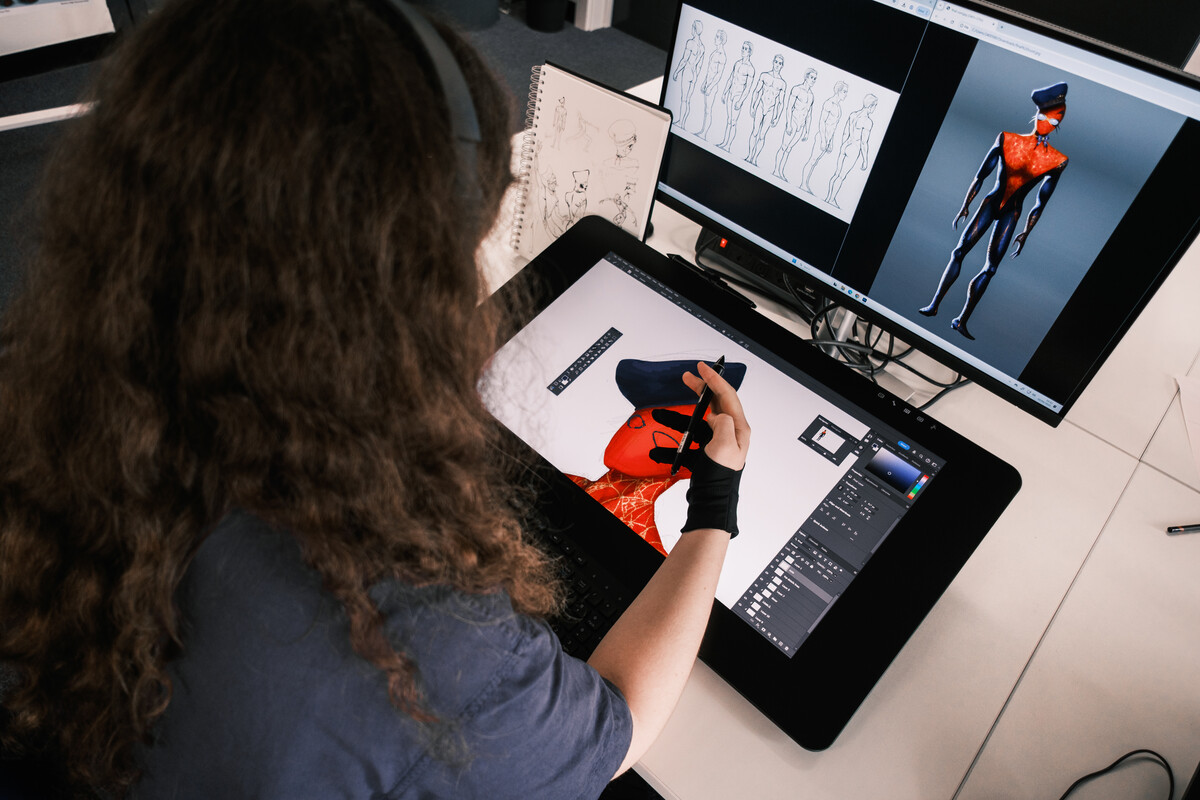When you apply to study an architecture degree at university it’s likely that you’ll be asked to provide a portfolio that supports your application.
Your portfolio is a key part of your application and so creating it may feel like a daunting task. But with thoughtful planning it doesn’t have to be.
This is your chance to show off your creativity, your thinking process and, perhaps most importantly, your potential as a future architect.
Don’t panic about making it perfect; that’s not what admissions tutors and academics are looking for. They want to see a portfolio that tells your story. Showing how you think, create and explore ideas is much more valuable than the quality of the finished product.
Whether you're applying to UCA or another university, a strong portfolio can make all the difference. Here's how to build one that stands out.
- What is an architecture portfolio?
- What should you include in an architecture portfolio?
- Top tips for building a stand-out architecture portfolio
- How to present your architecture portfolio
- What are admissions tutors looking for in an architecture portfolio?
What is an architecture portfolio?
An architecture portfolio is an organised collection of work that demonstrates your interest in architecture. It should showcase your design thinking and your ability to communicate ideas visually.
If you’re applying directly from school or college you won’t be expected to include buildings or technical drawings, but should instead express your creativity and how you develop ideas.
It shouldn’t just be a series of images and drawings of your work. It’s important to include captions, plans and reflective writing that gives admissions tutors an insight into how the project unfolded and why you made the decisions you did.
/prod01/channel_8/media/marketing-media/student-work/undergrad-courses/architecture/2024/Tylan-Young---Architecture-6---BA-Hons-Architecture-ARB-RIBA-Part-1-.jpg)
What should you include in an architecture portfolio?
Your portfolio should be reflective of your creative journey.
Here are some things you might include:
- Sketches and drawings: these may be observational, imaginative or creative concepts.
- 3D work: any models or sculptures you may have developed (though it’s best to use photos of these, rather than trying to bring them to the university campus!).
- Photography: especially if it explores space and structure.
- Design projects: any design-related work you’ve undertaken at school, college, or in your personal time.
- Process work: brainstorms, notes and other planning material that shows how your ideas developed.
- Written reflections: notes that explain your thinking and choices.
Top tips for building a stand-out architecture portfolio
- Be authentic: include work that genuinely interests you. It’s okay if it’s not traditionally architectural as long as you can link it to studying an architecture degree.
- Show your process: academics love seeing how you think. Include sketches, notes and development work.
- Experiment: showcase the different materials, techniques and formats that you have experience with. Don’t be afraid to take creative risks.
- Curate carefully: think quality over quantity. Choose work that tells a story about you as a creative thinker.
/prod01/channel_8/media/marketing-media/student-work/undergrad-courses/architecture/2025/Aman-Kumar---Archicture-BA-Hons-2.jpg)
How to present your architecture portfolio
Presentation matters, but it doesn’t need to be flashy. Much like how we said to ‘think quality over quantity’, it’s also important to prioritise structure over style.
Make sure to organise it clearly by grouping work by theme or project. Also ensure that you use captions to help explain your ideas and provide the reader with context.
Most universities will invite you to an interview or applicant day. During these sessions you’ll be able to either present or discuss your portfolio with a course academic or admissions tutor.
If you’re unable to attend your interview or applicant day most universities will allow you to upload your portfolio online. If you end up submitting a digital portfolio make sure that you keep things clear by labelling everything and using folders to group related pieces.
What are admissions tutors looking for in a architecture portfolio?
Every university is different, but most architecture academics and admissions tutors are looking for:
- Creative thinking: how you explore and develop ideas.
- Visual communication: your ability to express concepts through image and design.
- Curiosity: an interest in space and how people interact with it.
- Potential: they aren’t expecting trained architects; just show that you’re ready to learn and grow.
Be bold, be curious and, most importantly, be you.
/prod01/channel_8/media/marketing-media/student-work/undergrad-courses/architecture/2024/Jake-Harris---Architecture-2---BA-Hons-Architecture-ARB-RIBA-Part-1-.jpg)
Portfolio advice for UCA architecture applicants
Need more portfolio support?
Still unsure what to include? Come along to one of our upcoming Open Days where you can speak to our architecture academics and Admissions Team in more detail about what they expect to see in your portfolio.
You can also use our Unibuddy chat platform to speak directly to current UCA students and ask them about their portfolio. For more inspiration you could also check out the work created by UCA architecture students via our online graduate showcase.
More advice for architecture applicants
- How to write a great UCAS personal statement for an Architecture degree
- What careers can you do with an architecture degree?
/prod01/channel_8/media/marketing-media/student-work/undergrad-courses/architecture/2023/Lemuel-Gonzales,-BA-(Hons)-Architecture,-UCA-Canterbury_.jpg)
